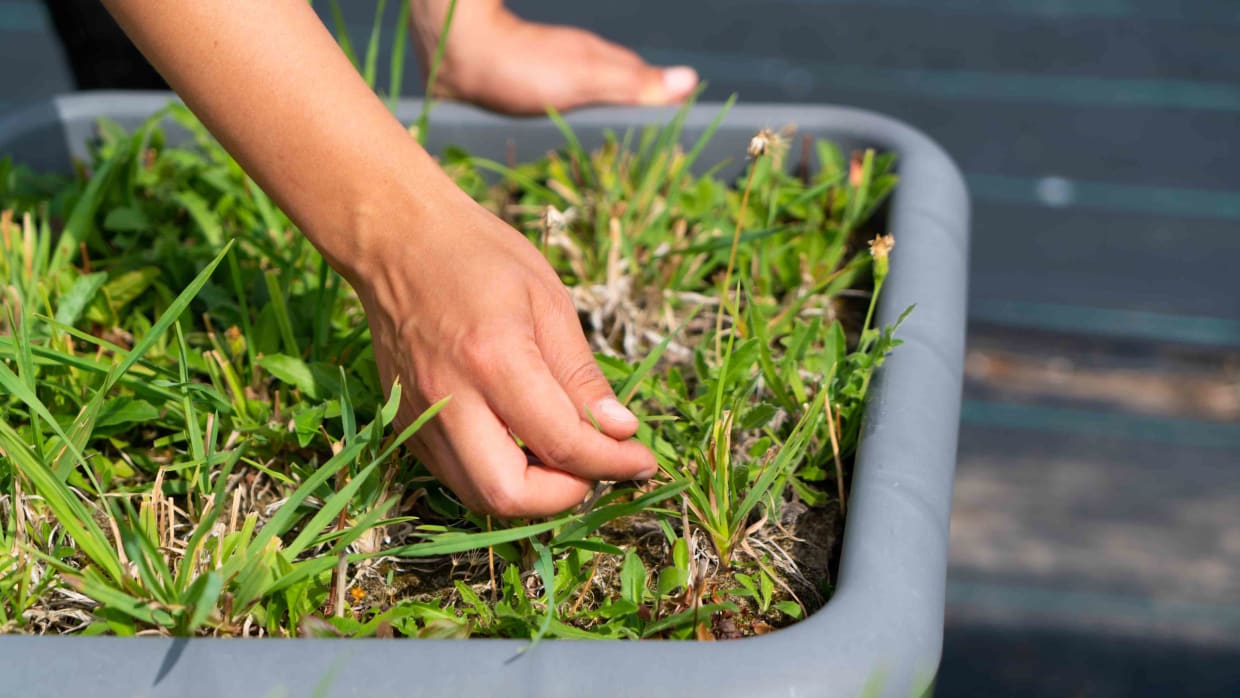
What does the dry spring say about the summer? “This will have a long-lasting effect on nature”
It has been extremely dry in the Netherlands for two months now. And nature is suffering as a result. Not only are plants struggling, but soil life is also being depleted by the drought. “It will take years for nature to recover from this.”
It is 1 May and the temperature is rising to 28 degrees in Amsterdam. It is remarkably warm for this time of year; days above 25 degrees are not normally seen in the Netherlands until mid-May. Also, this spring is exceptionally dry: with 6 millimetres of rain, March was the driest month since records began in 1906, and April also saw little rain and above-average warm and sunny weather.
This severe drought so early in the year has already resulted in more than eighty wildfires, including in the heathlands in the Veluwe. “The extremely low rainfall is remarkable for this time of year, and will have lasting effects into the summer,” says drought researcher Natalie Oram. As a postdoctoral researcher at IBED, she is investigating how grasslands are responding to increasing drought.

“Memories” of drought
The increase in more intense droughts – especially in typically wetter times of the year such as spring – is concerning, says Oram. Droughts have a large impact on nature and agriculture, and thus threatens the ecosystem services that they provide, including climate regulation, water filtration, carbon storage, and havens for biodiversity. In the Netherlands and throughout Europe, extreme weather events including droughts are occurring more often due to climate change. This means that before an ecosystem has a chance to recover from a drought event, it faces another one. “And that has a large impact on nature and agriculture, and therefore on our livelihoods as well.”
From her research, Oram knows that drought can leave lasting effects on ecosystems. “We know that drought reduces plant growth, photosynthesis, and the carbon that is passed from plants to the diverse biotic community in the soil. Drought changes the composition of plant and soil communities, such as bacteria and fungi, which are fundamentally connected. For example, we know bacterial communities, which drive soil nitrogen cycling, are more sensitive to drought than fungi. If we compromise soil bacteria, we could compromise nitrogen cycling, reducing plant’s ability to take up nitrogen and grow.”
Research from the plant-soil-ecology group (PSECO) group has shown that the effects of drought can persist long after the rains have returned. Both plant and soil biotic communities can form “memories” of drought, which affect carbon and nitrogen cycling. One potential solution is management that preserves or increases the diversity of plant species, as more diverse communities are generally more resilient to drought stress. Oram: “This can be even be as simple as increasing the number of different native plants in your own garden.”
Unpredictable
Does a dry spring also predict a dry summer? That’s difficult to say, according to Oram. “What we do know is that extreme weather – dry periods and heavy rainfall- are becoming more common. What we know as ‘normal’ for different seasons is becoming unpredictable.”
Whatever the weather brings, the drought will continue to leave its mark this summer. Oram: “There is no ‘reset’ button to the changes that drought makes in the soil and plants. These changes can lead to less carbon storage and nitrogen uptake in the long term. In extreme cases where drought leads to fires and kills the plant community, soil is highly vulnerable and at risk of erosion, especially in case of heavy rainfall. Management and adaptation to these drier conditions is necessary to protect ecosystems and our wellbeing.”

